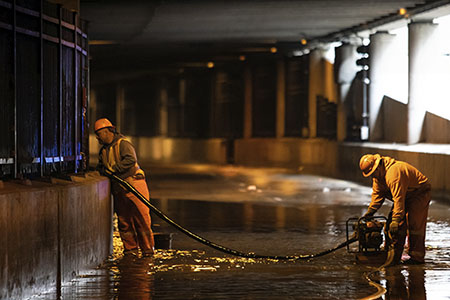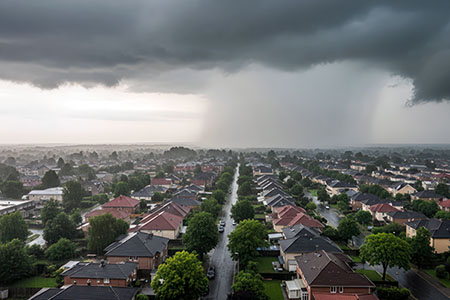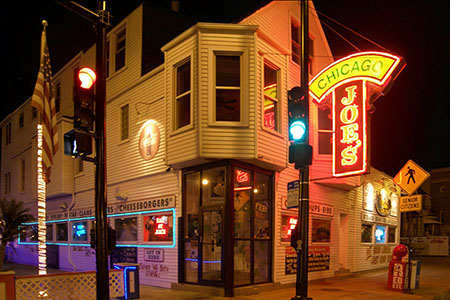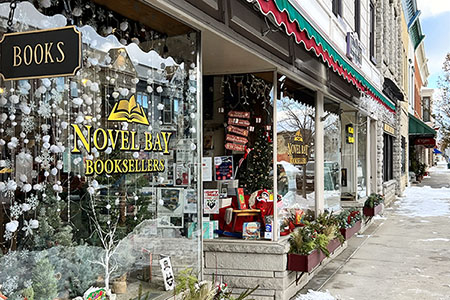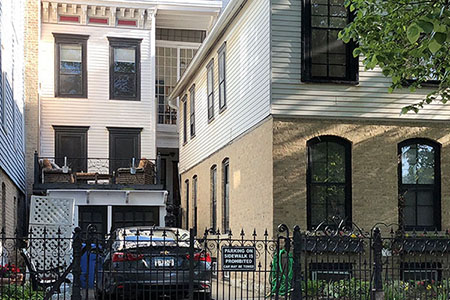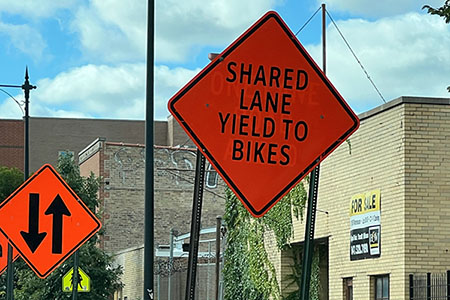
Property insurance rates in Chicago are surging, with increases up to 60 percent driven by extreme weather and the city’s aging sewer system.
(Above) City workers remove water from Lower Wacker Drive near Randolph Street after overnight flooding on May 18, 2020. Ashlee Rezin Garcia/Chicago Sun-Times via AP. Nov. 17, 2025 – The once extremely profitable Illinois property insurance industry literally is blowing in the wind and battling a rising tide of property damage from weather extremes nationwide. Billions of dollars in losses sparked by California wildfires and forest fires in western states – and an unprecedented explosion of giant hurricanes, which caused flooding along the Gulf Coast and Eastern Seaboard – are blamed for the lion’s share of the losses. So, why is Chicago being hit with a tsunami of property insurance rate increases? Our flooded basements, mostly caused by the Windy City’s ancient sewer system, are a major part of the problem. But should middle-class homeowners be forced to tread in foot-deep sewer water, and then be slapped with up to a 60 percent increase in insurance premiums? One Northwest Side bungalow owner, whose street’s sewers failed, had a total disaster loss of $19,488. Her insurance deductible was $1,500 on an annual policy premium of $2,084. Her State Farm Insurance agent said: “Notice of a large premium increase likely will come in April of 2026, on the rollover date of your policy.” Last July, State Farm announced an average rate hike of 27 percent this year on homeowner insurance premiums across Illinois, following a 12 percent increase in 2024.
Meanwhile, State Farm claims it paid $1.26 in damages for every dollar it collected in premiums. Basement flood costs add up Here is a list of costs and insurance payments the Northwest Side homeowner, a widow with two college-age children, received to pay for the damage: • Servpro cleaned up the basement flood water and debris, removed the bottom two feet of drywall and insulation, applied anti-mold spray to the walls, and installed dehumidifiers. Cost: $8,991. • The flooded, aging furnace and failed central air conditioning condenser outside had to be replaced at a cost of $8,190. • The water-damaged washer and dryer were replaced at a cost of $1,505, and mold-filled air ducts were cleaned for $575. • A rusty sewer check valve on the front lawn – which possibly would have prevented or minimized the flood, if working – was unfrozen and repaired for $1,800. Total insurance company payout to the homeowner was $17,748.
Even without a loss, two Old Town resident investment property owners were hit with the following hefty insurance rate hikes from Auto-Owners Insurance: • A vintage, brown brick four-flat investor-owner was hammered with a 59 percent insurance increase to $6,500 from $4,070 for the same coverage he had in 2024 – and with the $10,000 deductible – even though the building has a totally dry basement. The resident-owner of a similar graystone four-flat investment property in Logan Square paid an insurance premium of only $4,150 to Merrimack Mutual Fire Insurance Company for coverage in 2025. The deductible was only $1,000. The coverage for the building, which has a dry basement, also includes the landlord’s personal property. Beware of vines Last year, because one picky insurance agent said vines growing on the Old Town four-flat building could impact future insurance rates, the owner spent $3,500 to remove and haul away 44 contractor bags of vines. The five-day job included digging out roots on the next-door neighbor’s property, covering the gaps with freshly compacted soil, covering the dirt with heavy black plastic sheeting, and covering everything with river rock. • A vintage brownstone six-flat owner was slapped with a 35 percent insurance increase to $7,220 from $5,336 for the same coverage, even with a $10,000 deductible.
Insurance oversight needed? State Farm’s shocking price hikes prompted Governor J.B. Pritzker to call for legislation that allows the state to review and approve insurance rate increases before they go into effect. “Illinois is the only state in the nation where insurers can set prices without state oversight,” disclosed climate specialist Rob Moore. The insurance crisis in Chicago revolves around a high-water table, an aging sewer system, faulty check valves, foundation cracks, and gutters and downspouts dumping too much rainwater into sewers or ejecting water too close to the property. Across the nation the problem more often is flimsy construction and dwellings built in valleys too close to rising rivers. “Alabama and North Carolina are issuing grants and other incentives to homeowners who build homes with stronger, better engineered roofs and shingles, which can hold up to hurricane-force winds, similar to tornado winds in Illinois,” noted Moore. |







